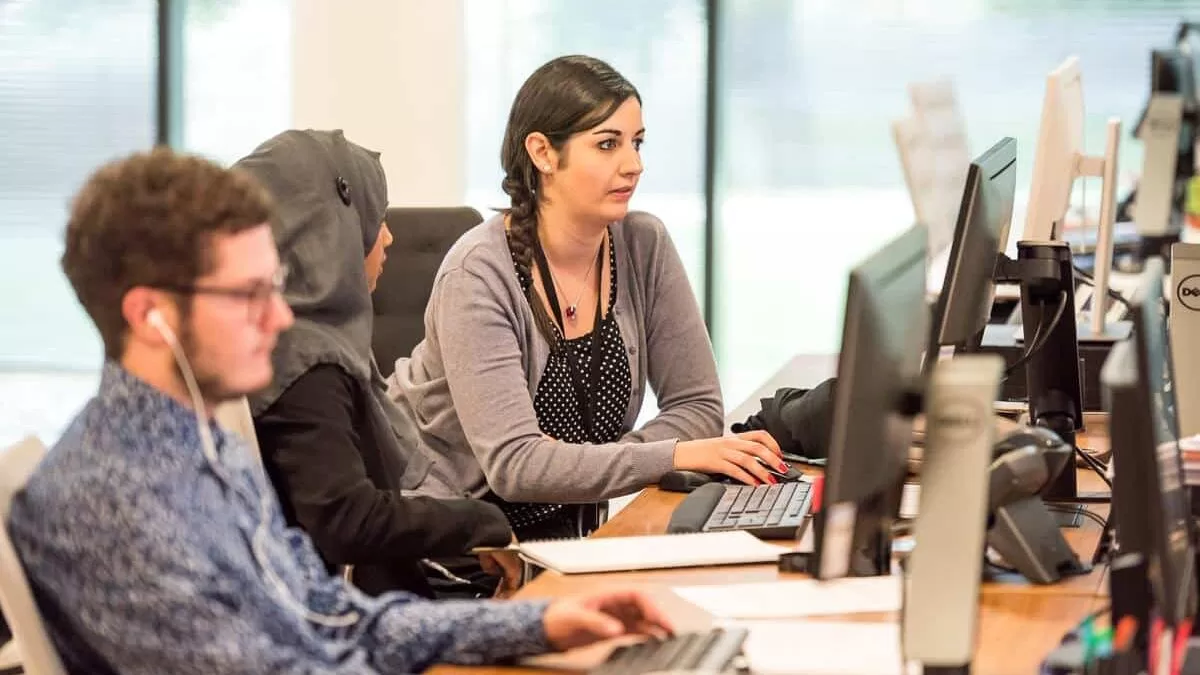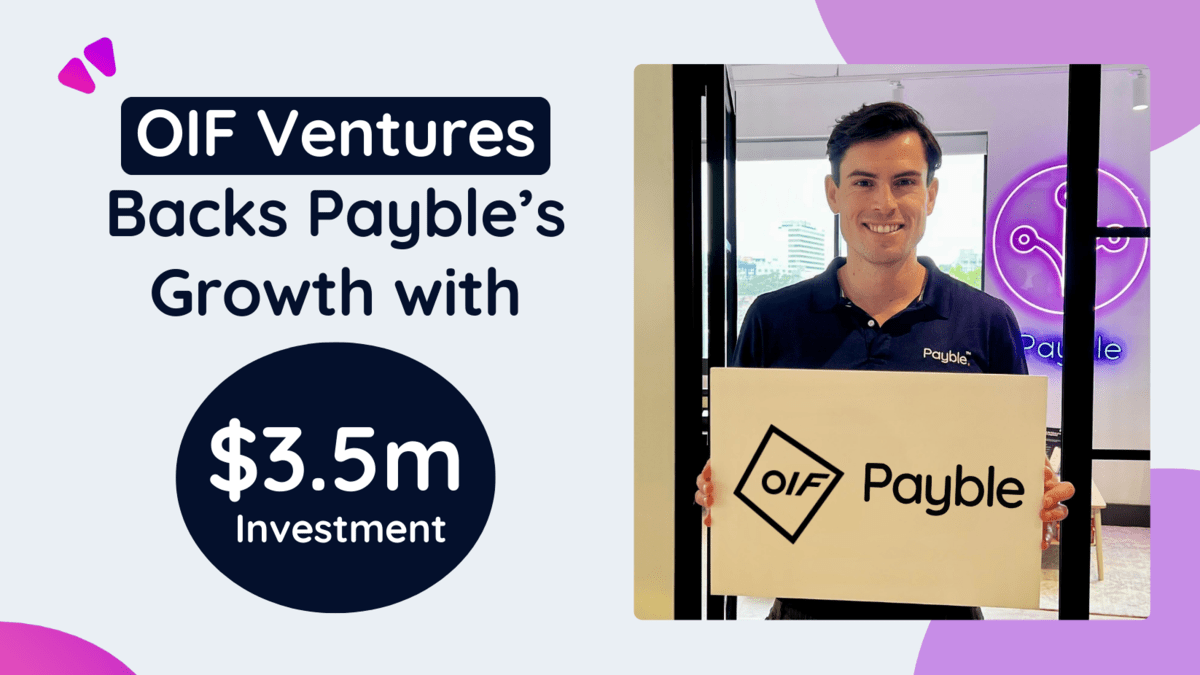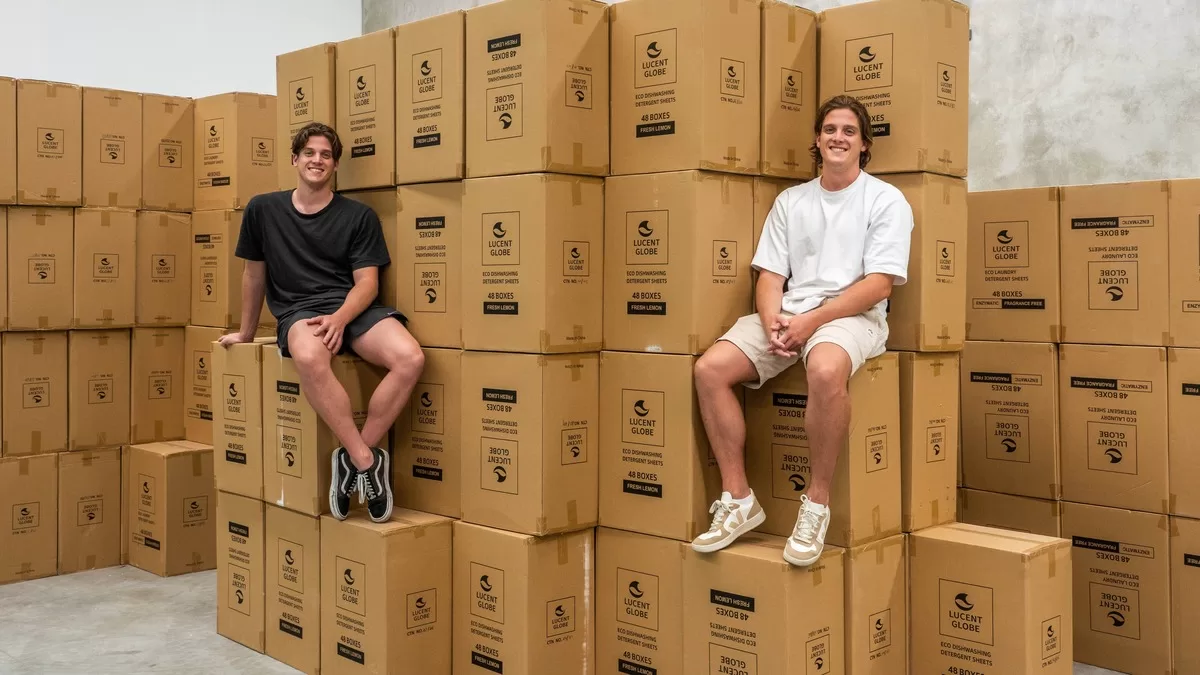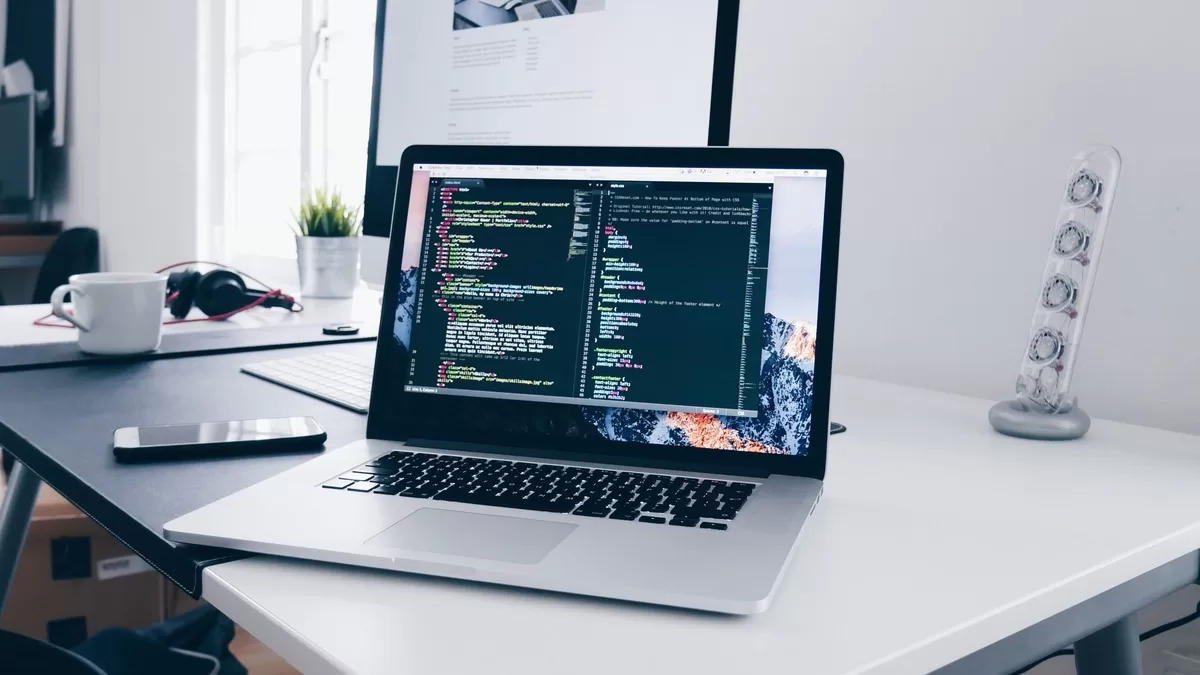Australian businesses risk reputational damage as a major change comes into force under the Sex Discrimination Act. They’ve had 12 months to prepare but many are yet to get their house in order. The new legal positive duty obligation which is now enforceable, requires businesses to proactively eliminate sexual harassment and sex discrimination in the workplace, not just respond when there’s a complaint. It’s a major shift and businesses that don’t comply risk court action and damage to their brand. With a greater reliance on technology, this is a real minefield for businesses to navigate and business leaders themselves say they are unprepared.New data from the Australian Institute of Company Directors and the Australian Council of Superannuation Investors shows while 85 percent of ASX300 Directors acknowledge preventing workplace sexual harassment ranks high on their boards priority list, just 32 percent of female directors and 45 percent of men believe their organisation is prepared to meet new positive duty obligations. But these changes aren’t just for ASX listed companies. They affect all businesses and organisations regardless of their size or level of resources, from large companies with hundreds of employees to sole traders. We have previously seen businesses forced to pay out millions in compensation and damages for sexual harassment when a compliant was upheld. That complaint no longer has to even be made. There’s no doubt some industries will struggle more than others, especially where casual sexism and harassment might be the norm like construction and retail. The 2022 National Sexual Harassment Survey showed workplace sexual harassment is more common in retail where 40 percent of workers had reported sexual harassment, while 29 percent of women in the building and construction industry have experienced sexual harassment at work. The change to positive duty will also mean an organisation has to eliminate sexual harassment and sex discrimination by third parties working on a construction site for example. Technology-facilitated sexual harassment is also adding another element, with unwelcome sexual conduct using digital technologies outside the workplace over social media, WhatsApp and Linkedin. According to a recent US survey of women who are on LinkedIn at least once a week, over 90 percent said they received sexual advances, or inappropriate messages at least once, while almost one in four said these messages showed up daily or every other day. Many men seem to use the platform as a pseudo dating app, forcing women to abandon the site, missing out on crucial business connections. Data from the Australian Human Rights Commission shows in the last five years, 33 percent people have been sexually harassed at work, but fewer than 18 percent made a formal complaint. While 40 percent of people who did make a formal report, said no changes occurred at their workplace as a result of that complaint. That complaint no longer needs to happen for businesses to be liable and they therefore cannot afford to take these changes lightly. The new legislation gives the Australian Human Rights Commission the power to monitor and enforce compliance of positive duty under the Sex Discrimination Act. We spend a third of our lives at work and we all deserve to be safe, feel respected, valued and given every opportunity to thrive. There is also a growing understanding that an unsafe and disrespectful workplace culture diminishes a businesses ability to attract and retain the best people. It reduces productivity and creates significant reputational and legal risks. An unsafe and disrespectful workplace also impacts the ability of businesses to attract customers and investors, a critical consideration with unemployment at its lowest and high staff shortages across many industries. We know culturally and racially marginalised workers, including migrant workers, are also more likely to experience a higher rate of sex discrimination and sexual harassment in the workplace. It’s imperative anyone in a leadership role understands these new positive duty obligations. So what can businesses do? Businesses of every size must make sure their leadership teams – whether that’s the board, people in charge of teams at every level or a sole trader making sure a contractor is safe – understand these new positive dirty obligations. Businesses need to consult with workers about sexual harassment in the workplace to help identify circumstances that might increase the risk of sexual harassment occurring. They need to review policies, practices and reporting and response systems to ensure they meet the positive duty compliance framework developed by the Australian Human Rights Commission. Businesses need to consider measures that will eliminate sexual harassment and sex discrimination in the workplace. They need to prepare a prevention and response plan. It’s not enough to just identify possible risks, businesses need to work out what and how they are going to prevent incidents and then the response to if they happen. Businesses should invest in education and training so all staff, including leaders, know their obligations and to ensure everyone not only feels safe, but actually are safe.Its vital leaders are tuned in to the safety and wellbeing of their workforce. This new positive duty regime is to ensure that safety is a higher priority in Australian workplaces. Positive duty under the Sex Discrimination Act In November 2022, the cornerstone recommendation of the Respect@Work Report – imposing a positive duty on employers and persons conducting a business or undertaking (‘PCBU’) to eliminate discriminatory conduct under the Sex Discrimination Act 1984 (Cth) – was finally implemented. Changes/modifications to the laws The positive duty provides that an employer or PCBU must take reasonable and proportionate measures to eliminate as far as possible sex discrimination, sexual harassment, sex-based harassment, hostile workplace environments and victimisation. The positive duty will shift the burden away from individuals making complaints and places the onus on employers to prioritise early intervention and prevention. From 12 December, the Australian Human Rights Commission’s monitoring and enforcement powers were enlivened. The Commission can commence an inquiry where it ‘reasonably suspects’ that a business is not complying with the positive duty and issue compliance notices. If compliance notices are not adhered to then the Commission can go to the Federal Court to seek enforcement of the compliance notice. There
Here’s a recap of recent funding developments from Australia, India, the US and beyond. OIF Ventures backs Payble’s growth with $3.5m investment Payble, a leading provider of payments workflow and customerengagement software, today announced it has closed a $3.5 million funding round led by OIF Ventures. The new funding will be used to continue to capitalise on strong demand for Payble’s citizen-centric payment solution in its beachhead segment of local government payments, as well as explore opportunities for global expansion. AI legal startup Harvey secures $80m in Series B funding Harvey AI, a legal service leveraging OpenAI technology, has raised $80 million in its latest funding round. The startup, valued at over $700 million, focuses on developing foundation models with OpenAI for applications in law and legal practice. UTS startups growth funding program backs Vizial.io with $100,000 investment Vizial.io is the inaugural recipient of a $100,000 investment from the UTS Startups Growth Funding program, addressing the impact of COVID-19 on Australian accelerator programs. UTS Startups, MA Financial Group, and The Gild Group collaborated to create a founder-friendly early investment initiative, aimed at supporting startups in the challenging early-stage funding landscape. Mist secures $1.6m in pre-seed funding Mist, an all-in-one finance and lifestyle app designed for international students, has raised $1.6 million in Seed funding. Backed by investors such as Investible, Allectus Capital, Archangel Ventures, Seedspace, and The Hunter Angels, Mist aims to be the go-to app for international students, providing streamlined solutions for relocation, including banking, telecommunications, payments, local accounts, phone SIMs, overseas health cover, and student ID cards. Smartlox raises $600,000 in seed round Smartlox, a startup digitizing security with a digital lockout tagout (LOTO) system, has secured $600,000 in its Seed funding round. The cloud-based, real-time safety, security, and smart access system integrates with Nokē Bluetooth padlocks to enhance the safety of frontline workers. Smartlox disrupts traditional lockout tagout practices through electronic lockout devices and software-based lockout systems. India’s tech startup funding sees 72% drop in 2023 India’s tech startup ecosystem faces a significant funding slowdown in 2023, with total funding reaching $7 billion as of December 6—a 72% drop from $25 billion in 2022. This decline, making 2023 the lowest-funded year in the last five years, is attributed to a substantial drop in late-stage funding, decreasing over 73% to $4.2 billion in 2023 from $15.6 billion in 2022. India is now ranked fifth globally in terms of funding, down from its fourth position in 2022 and 2021. The number of $100 million-plus rounds has also decreased by 69% compared to 2022. Keep up to date with our stories on LinkedIn, Twitter, Facebook and Instagram.
Imagine you’re responsible for defining and developing a new product. It’s expensive, time-intensive, and requires heaps of creativity. Your CEO considers it a critical project, likely to be a key driver of revenue in the coming years. So, what can you do to ensure success? Historically, Research and Development (R&D) has been an internal project reliant on big investments in infrastructure, equipment, and people. However, introducing a new mindset and believing that you don’t have to tackle the challenge alone, makes way for transformative partnerships and strategic insights that would otherwise be hard to come by. A collaborative journey towards success works best even for sizable corporations and established businesses. Looking beyond the financial benefit R&D activities often require substantial financial commitments, which can strain a company’s financial resources. In fact, the most recent study into R&D from the Australian Bureau of Statistics highlights the business expenditure within one financial year across all industries was over $20 billion, up 14 per cent from 2019-20. The professional, scientific and technical services industry was the top investor at over $6.97 billion followed by manufacturing ($5.2b) and then the financial and insurance ($3.07b) sectors. Ranked by 2021-22 BERD. Data for the Industry with the 10th highest R&D expenditure (Other Services) has been suppressed due to data quality issues. This has been replaced with the 11th highest Industry (Administrative and support services). By collaborating with external partners, your business can share the costs and risks associated with innovation projects while still benefitting from being a part of the process. This sharing not only lightens the financial burden but also safeguards the company’s balance sheet from the potential repercussions of unsuccessful ventures. Engaging with universities, startups, government bodies, and relevant enterprises offers a compelling method to foster innovation and gain access to new markets, new customers, new perspectives, and new methodologies. What’s more, well-built partnerships lower operational costs, offer valuable insights into new technologies and help train the required skill sets within the organisation. So, while an initial budget is needed to kick the partnership off the ground, in the long run, businesses that look to partnerships can maximise their investment and inform their overall strategic goals. In terms of building a realistic budget for each initiative, this depends on what you are trying to achieve. If you are serious about cracking open a new market then analysis is needed to estimate the cost of what it will take to build. Considering much of what you’re trying to achieve is unknown and therefore very hard to estimate, add a sensible risk contingency (sometimes up to 100%) and then commit to spending this. For relatively young digital native firms the challenge can be working out what is considered product development and what is R&D. You need to fund and assess the two differently (larger risk appetite for R&D but more brutal cost control). For some highly digital and future-oriented organisations, the line between product development and R&D can be hard to draw. For larger corporates R&D can be a useful tool to keep services up to date, engage employees, and help build brand image. These organisations can target a percentage of their overall budget, which depending on their industry means the more the better. Companies in industries that are more bricks and mortar should still be allocating budget for R&D but potentially less than those which are digital natives or are targeted at bringing new products to market. But business leaders should remain careful. They should not spend money where they don’t fully believe in the delivery capability of those who will be doing the work. For each initiative, you can scale spend over time if you are seeing results, the same way you might allocate a marketing budget. Leaders will also note that there can be significant tax benefits to doing R&D and small to medium-sized companies can recover a significant portion of their spend, while larger companies can also access the offset if they qualify via the “intensity threshold”. If spend falls into this category, it’s important to bear in mind that these may be audited and therefore it’s a useful step to design activity in this space with the ATO guidelines in mind. Realising the value of partnerships Establishing the priority for R&D initiatives is often the hardest part – we have seen multiple organisations who had “too many” ideas and failed to prioritise these effectively which meant they consistently ended up spending less on R&D than they’d budgeted for. This can leave the field open for smaller and more targeted companies. Things change both inside and outside your organisation so ensure that you have a process that can simply assess the initial priorities of your set of ideas based on business value, and continually assess these in the light of changes in the environment. Depending on how “digital” your R&D is you could be able to identify multiple initial goals that can be addressed by small teams building a technical spike followed by PoC through the technology and key features – if you continuously examine the likely success of these you can drop those that look unlikely to bring the business value identified and prioritise those that look more likely – potentially starting new initiatives based on your updated priorities. The Portfolio management of these initiatives is fundamentally about having a simple way of assigning business value and a regular cadence of assessing that your priorities are correct; as well as the discipline to check that each separate initiative is on target to deliver the value within a sensible budget and kill it if not. Be careful to ensure that you can have a suitable group that can properly focus on each initiative. Startups have to focus on a single idea at a time and deliver it or kill it, which is why they are usually better at this than corporates, although of course they often go out of business on the way! Managing the risk To avoid overspending, or wasting
You can spend a lot of time workshopping ideas, but at the end of the day, you just have to launch. It might not be 100% solid, but you can build through trial and error as long as you get started. Brodie and Roger Cook, the visionary twin brothers steering the unprecedented success of Lucent Globe, a Gold Coast-based startup specialising in eco-friendly household cleaning products, share a remarkable journey. The past 12 months witnessed their e-commerce venture skyrocket by an astonishing 5900%, underscoring the growing trend of sustainable spending. Founded in 2021, Lucent Globe has rapidly evolved from fulfilling 2,000 orders annually to a thriving enterprise, boasting over 60,000 orders this year. Managing more than 4,000 orders per week, the startup recently achieved a milestone by selling out on Black Friday, a testament to the burgeoning demand for their innovative, zero-waste, plant-based, and 100% biodegradable cleaning products. The spark for Lucent Globe ignited during the Cook brothers’ transformative journey to Mt Everest, where the natural beauty was marred by litter and single-use plastics. Upon returning to Australia, Brodie and Roger embarked on a mission to create affordable and effective cleaning alternatives, reducing household dependence on single-use plastics. In an exclusive conversation with Dynamic Business, the Cook brothers share their entrepreneurial journey, highlighting the pivotal role of purpose-driven business in navigating the flourishing sustainable consumer market. Early days Reflecting on their early days, Brodie and Roger recall, “Back in 2017, we embarked on a trip of a lifetime to Mt Everest with high expectations to experience unrivaled natural surroundings. Sadly, we found a vast place of natural beauty riddled with litter, most of it cheap, single-use plastics. When we returned to Australia, we set out to create a product that would reduce household reliance on plastics, focusing on cleaning as a logical solution.” “When we arrived back to Australia after our trip we kept thinking there must be something we can do, and so we set out with the idea of creating a product that would help reduce household reliance on plastics. Cleaning was a logical solution as nearly all cleaning products are packaged in plastic. For example, dishwashing tablets are packaged in plastic that can’t even be recycled. So, we set out to tackle that problem.” Investment into social media has been key to our success When asked about important choices, the duo emphasises the importance of social media. “Aside from being first-to-market in Australia, investment into social media has been key to our success, particularly with the educational content produced and shared across our socials. In our first year of business we made 2,000 sales in total, and yet in 2023 so far, we’ve secured over 100,000 orders and are currently recording over 10,000 orders per week. Not to mention 200 new subscribers a day. The market response has definitely validated our concept of investing in social media.” “A key pillar for our business strategy is to make sustainable, zero waste products affordable to everyday households, not just in Australia, but around the world. Our focus on cost and quality is what sets us apart from others in the industry, as we wouldn’t say we really have competitors.” Sustainability the way to go Addressing what sets Lucent Globe apart, the brothers highlight their research and development team, creating innovative plant-based detergent sheets and their commitment to making sustainable, zero-base products affordable globally. “We have a research and development team that have helped us develop our laundry and dishwasher detergent sheets with unique plant-based ingredients free from traditional harsh chemicals. We’re continuing to work with scientists to optimise the clean achieved with our products using the latest technology, without of course sacrificing the environment, along with looking at new categories which can benefit from sustainable alternatives. Overcoming challenges Brodie and Roger acknowledge the slow start. “Initially, it was a slow start for our business; after all, we were creating a completely new category for Australians to explore — dishwashing and laundry detergent sheets were almost non-existent when we started. Even now, a year and a half later, a large percentage of people still aren’t familiar with the concept. But, through educational content and advice, we’re slowly creating a new and emerging category within household cleaning.” The duo also emphasises on the importance of education. “Listen to your customer and educate them on why they should choose your product. “Understanding the cost of living crisis, we developed content to educate our customers on the savings available through choosing our detergent sheets, along with the environmental impact of course. Through this, our dishwashing sheets received a lot of traction, particularly because of the price of dishwashing pods at the major supermarkets.” Word of advice Offering advice to aspiring entrepreneurs, the Cook brothers emphasize launching without waiting for the perfect moment. “The first is to not wait around for the perfect moment. You can spend a lot of time workshopping ideas, but at the end of the day, you just have to launch. It might not be 100% solid, but you can build through trial and error as long as you get started. “The second lesson is you need to work hard and be prepared to put in a lot of hours, especially if you need to gain background experience and build your knowledge bank. But, in return you will reap the reward!” Keep up to date with our stories on LinkedIn, Twitter, Facebook and Instagram.
As we approach the end of 2023, the horizon of workplace dynamics for the coming year is taking shape. Specialised recruiter Robert Half has discerned six key trends that will significantly impact employers and professionals in 2024. These trends illuminate the evolving landscape, signaling a shift towards an employer-driven market, a growing emphasis on skills in hiring decisions, and a stabilization of salaries. Despite office day mandates, a persistent demand for workplace flexibility underscores a need for thoughtful consideration from employers. Furthermore, businesses are broadening their talent search, exploring unconventional avenues such as rehiring retirees and engaging with international talent. Shift to an employer-driven market as demand cools The Australian job market is recalibrating after a few years of rampant hiring which has tipped the scales in favour of an employer-driven landscape. Businesses are focusing on making strategic, value-adding hires, which is altering the dynamics of candidate-employer negotiations. Candidates do not have the leverage they once had, and only those with in-demand skills are in a position to negotiate higher salaries. Hiring for skills, not just qualifications Companies are increasingly prioritising skills over traditional qualifications when making hiring decisions. 74% of employers are not too concerned if a candidate doesn’t have the required certifications when assessing them for a role. This shift is driven by the recognition that possessing specific skills is often more indicative of an individual’s ability to contribute effectively to the workplace. Stabilising salaries Even as cost-of-living pressures escalate, candidates will not be presented with above-market-rate offers unless they have niche skill sets in 2024. Offering higher salaries was a strategy employed by businesses to attract top talent at a time when there was a chronic skills shortage across the board. But in 2024, companies are re-engineering their salary offerings and will propose salaries mostly in line with market rates. “As the economic landscape transitions into a state of moderation in 2024, the dynamic surge in salaries will stabilise. Employers will need to demonstrate the compelling factors that differentiate their job offerings, while employees should carefully articulate their unique contributions and align their expectations with what’s happening in the job market.” said Director of Robert Half, Nicole Gorton. Demand for workplace flexibility will continue despite office day mandates More employers will mandate office days for employees to increase their number of in-office days in 2024. In 2023, 87% of Australian employers implemented mandatory office days. However, the impact of mandated days may also see candidates and staff look for new opportunities. In 2023, 31% of employers said they have lost at least one employee due to mandates, while 40% anticipate resignations, which could play out in 2024. “While the benefits of bringing people back are evident, careful consideration needs to be taken when making changes to a policy that is of utmost importance to many professionals, especially if a business’s work-life harmony benefits are what got candidates through the door in the first place,” said Gorton. Looking for talent beyond traditional groups To fill skills shortages, business leaders are more willing to explore different hiring avenues, including reintroducing retirees back into the workforce or engaging with international talent. Hiring retirees has been a smart strategy for employers in 2023, as about half who have (47%) would do it again. More than a third (37%) have not yet brought on a retiree but would consider it in the future. “A great candidate – regardless of their work history – should have the technical expertise to perform core job functions efficiently and effectively, and the ability to situate their skills within the wider organisational context, using power skills such as problem-solving or stakeholder management. Employers are looking beyond traditional groups of people for their roles and are relying on word of mouth or networking to final specialised talent,” said Gorton. Learning and development opportunities are driving candidate decisions The combination of evolving technologies and a heightened focus on productivity means employees are taking matters into their own hands when it comes to addressing their skills development in 2024. In 2023, about half (49%) of Australian employers say employees have asked for training and professional development opportunities to improve their capability in their current position, and this will continue during the next 12 months. Keep up to date with our stories on LinkedIn, Twitter, Facebook and Instagram.
Digital infrastructure is all around us, running our increasingly digital world. As summer approaches, scorching hot temperatures will see demand for electricity spike to a once-in-a-decade high, putting pressure on grid infrastructure and serving as a painful reminder that legacy grid infrastructure is critically unprepared for extreme weather events. According to the Australian Energy Market Operator (AEMO)’s latest Summer Readiness report, Australia is expected to experience exceedingly hot and dry conditions this year, driven by El Niño. This will increase the risk of bushfires and extreme heat across the country and cause adverse effects on an already stretched infrastructure. While the grid is resilient, Australia is going through an energy transition that is adding additional pressure on existing infrastructure and increasing the need to switch to smarter grids. This energy transition coupled with these extreme weather patterns will only exacerbate the problem. One thing is known for sure, if digital infrastructure fails, the physical world suffers. To address this potential critical failure, today’s businesses must focus on the resilience of their systems and how businesses of all sizes can continue to function even after a critical power failure due to changing weather conditions. Organisations must ensure that if blackouts were to occur due to grid overload, and access drops, what does that mean for their digital infrastructure? What does it mean for their business? What does it mean for their customers? What does it mean for their employees? These are questions that have not had to be answered in the last five years and must now be answered by business leaders and CTOs to ensure that customers and employees can still access data. In recent weeks, outages have caused businesses – both large enterprises and SMBs alike – to suffer, showcasing the need for businesses to look at continuity plans to assess if they are prepared to handle grid failure. Organisations must strategically think about their business requirements and ground themselves in the right framework to make decisions related to continuity plans. It is critical to understand where data is stored and the impacts of the system crashing. The inability to access critical systems is a danger to a business’s bottom line, ensuring that an uninterruptible power source or an uninterruptible power supply (UPS) is included in continuity plans is smart business. If the main supply does indeed fail, the battery will take over and guarantee that the equipment will still function until the main supply can be shut down safely without losing any data or integrity of the system. While data quality and resilience of the grid are incredibly important, from a power perspective ensuring that digital infrastructure is holding onto a business’s precious data is going to be accessible or through any interruption whether it be weather patterns or a cybersecurity breach. There will be no sector or industry that is immune from relying on digital infrastructure to run their businesses, however, there are industries that will be adversely affected by a blackout, including healthcare, financial services, and the engine of the Australian economy, small to medium businesses. Aside from business, positive aging has meant that critical infrastructure and equipment are being stored in homes rather than in resilient systems like hospitals. Once organisations have continuity plans, they must look to trusted professionals to review and assess scenarios that are likely to occur if they are unable to access cloud platforms or critical data. Safeguarding infrastructure is imperative, the software that measures and manages these assets is just as important to safeguard operations. The right tools predict and send alerts for issues before they become critical failures. While cloud systems are resilient, It’s often taken for granted that they will work flawlessly, which isn’t necessarily the case, so planning for the same level of resilience for on premise data centre infrastructure or assets at the edge is a business imperative. Corporations must be prepared to pay the price if they are not ready when adverse weather conditions strike, causing critical digital infrastructure to fail. By not preparing businesses are preparing to fail, and those that review plans now will ensure that their infrastructure will continue to function. Keep up to date with our stories on LinkedIn, Twitter, Facebook and Instagram.
Step into the realm of foresight as two of Australia’s top female startup experts unveil their predictions for the year 2024. Dina Titkova, Senior Manager of Startup Programs and Partnerships at UNSW Founders, shares her thoughts on what the future of women’s health and medtech will look like in 2024. “Research commercialisation and entrepreneurship education will be the key focus areas for government support. The government’s $15B Reconstruction Fundis one to watch as it furthers its support for researchers and entrepreneurs in the renewable, medtech and advanced manufacturing space. UNSW and UNSW Founders are launching a number of initiatives to accelerate research commercialisation via startups, setting ambitious targets for 2024-2025 regarding spinouts. “Something I’ve loved watching this year is how the startup ecosystem has begun normalising and progressively addressing women’s health challenges, responding with technological advances and the availability of capital. I expect this to only accelerate in 2024. New research shows that global revenue in women’s health startups is forecasted to grow 15.6% to reach $60B USD by 2027 and UNSW Founders is committed to being at the helm of this in Australia, offering both a dedicated female-focused accelerator program, New Wave, and a health-focused accelerator, Health 10x, offering first of its kind tailored support for women’s health startups via partnership with Virtus Health. “On the topic of health, my one wish for 2024 is for the government to invest more in the medtech sector. This is a hugely underfunded sector in Australia with most VC firms and private investors seeking investments in this area too risky. Support from more angel investors such as Australian Medical Angels is vital for medtech startups, with only one in ten medtech startups receiving the investment they need to go on and solve the real-world challenges that you, your family or your friends may face.” Beste Onay, Investments and Portfolio Manager at UNSW Founders, shares her thoughts on what the future of climate tech, mergers & acquisitions and angel investing will look like in 2024. “2024 will be all about climate tech startups. Sustainability challenges are only set to worsen, particularly as we have seen this year’s COP 28 draw to a close, highlighting the pressing issues not just Australia but the world faces in reducing carbon emitters and encouraging more innovations to cool rising temperatures. Likewise, with mandatory climate reporting for large Australian corporations in 2024, this provides a huge opportunity for climate tech startups offering tools to measure, report and reduce emissions with angels and VCs keeping a keen eye on developments in this space. “Mergers and acquisitions are also going to be a hot topic next year, particularly in light of the recent merger crackdowns we’ve seen. I currently don’t see a lot of unbiased education being offered to founders in this space and think it’s a hugely overlooked topic. UNSW Founders will be taking steps to address this so watch this space! “Over in the angel investing space, I’m hoping there will be a more positive outlook and sentiment in 2024, especially whilst VCs have kept their purse strings tight due to the uncertain macroeconomic conditions. We’re hearing lots of chatter that many early-stage VCs want to focus on later-stage investments next year and with many Australian VCs already focusing on later-stage investments, this is going to make it really challenging for early-stage startups. “That’s where angel investing comes into its own – the role of angels will be more vital in 2024 than ever before. If could-be angels want to learn more about how they can make an impact on the startup scene, I’d urge them to join an angel investing course, such as the one we run at UNSW Founders so they can learn tips on where they can invest their money safely and securely to help the innovations of tomorrow.” Keep up to date with our stories on LinkedIn, Twitter, Facebook and Instagram.
Welcome to AI Weekly, where we delve into the cutting-edge and ever-evolving world of artificial intelligence and bring you concise yet comprehensive summaries of the most exciting AI developments. Landmark decision bars AI inventors In a groundbreaking case, a US computer scientist faced a setback in his quest to secure patents for inventions crafted by his artificial intelligence system. Stephen Thaler sought approval for two patents in the UK, attributing the creations to his AI system, DABUS. However, Britain’s Intellectual Property Office rejected the application, asserting that patents must be granted to a human or a corporate entity, not a machine. Google’s ‘Pixie’ AI Assistant and Object-Recognizing Glasses in the Works Tech giant Google is developing an AI assistant named ‘Pixie’ expected to debut with the upcoming Pixel 9. Fueled by the Gemini engine, Pixie leverages data from Google’s array of products across devices to execute intricate, multimodal tasks. Additionally, Google is exploring the creation of glasses equipped with object recognition capabilities, providing wearers with guidance on tool usage. This development follows recent news of Google’s pivot from its independent AR hardware efforts in favor of a collaborative venture with Samsung. AI specialist job surge yet to materialize Despite predictions of a surge in AI specialist jobs, particularly in marketing, the anticipated wave has not yet arrived. While generative artificial intelligence has triggered significant advancements and entrepreneurial ventures, major brands have yet to reshuffle their organizational structures or create dedicated leadership roles for AI-related functions, with some exceptions like Coca-Cola. Atlassian introduces AI-powered services to enhance teamwork Atlassian has introduced its inaugural suite of AI-powered services across its cloud platform. Leveraging two decades of data insights, Atlassian Intelligence aims to streamline teamwork by automating routine tasks, boosting individual productivity, simplifying company jargon, and fostering data-driven decision-making. Notable features include Generative AI in the editor, AI-generated summaries, and natural language automation. Meta’s Second-Gen Ray-Ban Glasses now equipped with Advanced AI Capabilities Meta’s latest update for its second-generation Ray-Ban glasses introduces advanced generative AI capabilities. The glasses can now interpret scenes and make judgments, utilizing on-board cameras for image recognition. The update also incorporates Bing-powered search functionality directly into the glasses, offering users a seamless and integrated experience. ByteDance secretly deploys OpenAI tech for competing language model ByteDance, the parent company of TikTok, has covertly employed OpenAI’s technology in violation of terms of service to develop a rival language model known as Project Seed. Internal communications suggest an intention to “whitewash” any evidence of this unauthorized use, raising ethical concerns in the tech community. Bill Gates’ Optimistic Outlook on AI in 2024 Billionaire philanthropist Bill Gates shares his optimistic views on the future of AI in a comprehensive blog post. Reflecting on the transformative events of 2023, Gates predicts that AI will significantly impact sectors such as education and mental health. While acknowledging the revolutionary potential of AI, he also underscores the importance of addressing global inequities and empowering future generations. Intel Unleashes 5th Gen Xeon Processors, Focused on AI Acceleration Intel has launched its 5th Gen Xeon processors, strategically designed to enhance AI capabilities for cloud, network, and edge applications. This move is part of Intel’s competitive strategy to enter the AI accelerator market, a domain currently dominated by Nvidia. Keep up to date with our stories on LinkedIn, Twitter, Facebook and Instagram.
As the holiday season approaches, a recent survey sheds light on Australians’ festive spending habits, revealing a resilient approach to budgeting and a diverse range of plans. As part of Savvy’s ongoing research into consumer sentiment and spending habits, we look at how Australians will be celebrating Christmas this year: if they’re spending big or tightening the belt, whether they’ll be taking a holiday, and which sales will attract their dollars. A representative survey conducted by Savvy (n=1,000) has shown that 55% of Australians will be spending the same or more than last year, despite economic hardships. 40% of respondents said they would be spending the same amount of money, despite inflationary pressures diminishing the purchasing power of their dollar. 15% said they will spend more than last year. 42% of men said they would be spending the same as last year, with women slightly behind at 38%. As for dollar amounts, 45% of Australians say they will spend up to $500, with 31% saying they are planning to spend between $500 and $1,000. 21% will splurge by spending over $1,000. This year, 53% of the 25–34-year-old cohort will be spending between $0-$500, followed by the over 65 demographics on 52%. Slightly more women (47%) than men (42%) also said they will be spending modestly this Christmas. As for how Australians will try to save on their gifts, 44% said they will be hunting for bargains online; 45% said they’ve taken to snapping up Black Friday sales; 44% said they would set an agreed gift spending limit. Black Friday sales are popular among the young, with 58% of 18-24s and 57% of 25-34s partaking in the sales. Black Friday has eclipsed the traditional Boxing Day sale, with only 19% of Australians willing to wait for the 26th of December to nab bargains. As for travel plans, 29% of respondents said they’d take a domestic getaway, with 17% saying they’d be local tourists with a “staycation” in their local area. 44% said they had no plans to travel. Savvy spokesperson Adrian Edlington says the majority of people spending the same or more on Christmas may show people are looking to have a good end to a year plagued by economic doubts. “Christmas is a special time and people want to cut loose and have a pleasant holiday they can look forward to,” he says. “People may have saved up specifically for Christmas, which is borne through these results as people are prepared to spend even more than last year, despite their hard-earned not going as far as it does today. If anything, it should give businesses a pause for relief, especially if they’re retailing online.” For full survey report with graphics, click here. Keep up to date with our stories on LinkedIn, Twitter, Facebook and Instagram.
The way we do business is changing, and in 2024, recruitment culture is set to change with it. As businesses navigate the evolving needs of a diverse workforce, one thing has become clear: organisations must adopt innovative recruitment strategies that not only attract top talent but also foster inclusivity and fair evaluation. Let’s explore the key trends shaping recruitment in 2024. Inclusive job ads attract diverse talent Redefining the traditional approach to job ads is the first step to making your hiring process more inclusive. Job descriptions typically list a narrow set of skills, experience, and expectations that can prevent neurodiverse people from applying in the first place. For example, listing ‘exceptional communication skills’ indicates a narrow understanding of what great communication can look like – something that many neurodivergent people can struggle with. Creating an inclusive job description doesn’t mean that you can’t list the essential skills needed for the role, it just requires you to create a space where neurodivergent individuals feel encouraged to apply. Make it clear that your workplace values all different people and recognises the unique skills and perspectives that diverse employees bring to the table. This shift towards inclusivity not only broadens the talent pool but also enriches the collective capabilities of the workforce. Implementing assessment-based hiring Traditional interviews may not always be the most effective means of evaluating a candidate’s suitability for a role, particularly for neurodivergent people. For this reason, businesses are turning to assessment-based hiring to evaluate a candidate based on their skill rather than an arbitrary interviewing process. By assigning short, role-specific tasks, employers can accurately gauge a candidate’s skill set. This approach levels the playing field, ensuring that individuals are assessed on merit and skill alone. This promotes a fair and unbiased recruitment process for candidates who may not perform as well in interviews. It also ensures that the person you hire is truly skilled at what they do – something you cannot guarantee from a CV alone. Streamlining the recruitment process with AI The rise of artificial intelligence (AI) has proven helpful for many tedious and time-consuming tasks, and recruitment is no exception. As generative AI tools like ChatGPT become more widely used in 2024, recruiters are bound to find that it can be a great way to streamline the recruitment process. Try as we might, it is a fact that personal bias makes its way into the hiring process at every turn. AI can help to eliminate some of these pre-conceived judgements by analysing CVs for a set of objective skills or experiences. This also allows recruiters to make informed decisions and expedite the hiring process. While AI is undoubtedly useful, there are some limitations to what it can do. AI cannot take the place of innately human qualities, such as looking past a candidate’s nerves to see their potential or assessing whether they will be a good cultural fit within your business. While businesses still need humans to apply a personalised and empathetic approach to recruitment, AI can be a great tool to turn to when it comes to the more pragmatic elements. Transferable skills take priority For far too long the traditional hiring process has prioritised degrees and years of experience over a far more important factor: having the right skills for the job. While these two factors can be important to a role, this narrow approach can eliminate great candidates from your hiring pool. This includes neurodivergent people with a wealth of self-taught skills, as well as people with transferable skills. With many industries throughout Australia experiencing a major skills shortage, we are bound to see businesses opening their doors to a wider pool of candidates in 2024. The focus now will be on identifying specific skills rather than prioritising formal qualifications. This shift will open the door to a more diverse range of skilled candidates, creating a more diverse workforce and ensuring businesses have the staff they need to thrive. Personalised onboarding The onboarding process is an overlooked part of recruitment, but it can ultimately make or break an employee’s success within your organisation. Being forced to conform to a narrow set of training standards can be an incredibly overwhelming experience, especially for neurodivergent people. Acknowledging that one size does not fit all, we will continue to see businesses personalising their onboarding processes in 2024. Instead of inundating new hires with team meetings and training manuals, employers should instead take the time to understand and adapt to each individual’s preferred learning, communication, and feedback style. This personalised onboarding approach not only respects the unique needs of each employee but also cultivates a culture of mutual understanding and support, laying the foundation for success that will benefit both your business, your new employee, and the wider team. In 2024, we can expect to see businesses depart from conventional recruitment techniques in favour of more inclusive and innovative processes. By revolutionising the way we hire, employees and organisations can enjoy a more diverse and successful workforce. About The Safe Space Collective The Safe Space Collective is on a mission to create more inclusive, meaningful, and supportive workplaces for neurodivergent people all over the world. The innovative platform specialises in providing tailored and affordable education, advice, tools, and strategies to HR teams and leaders while also supporting neurodivergent employees to feel empowered in their careers. With research showing that many neurodivergent people often find themselves unemployed just 3-6 months after joining a new organisation*, The Safe Space Collective endeavours to create a world where every neurodivergent individual has access to the same opportunities for meaningful and sustainable careers. About April Lea, Co-Founder of The Safe Space Collective April Lea founded The Safe Space Collective with the goal of creating supportive and inclusive workplaces for neurodivergent people following her autism and ADHD diagnosis. After working as a product and engineering leader in the tech industry for over a decade, April was hospitalised for severe burnout, which saw her take a six-month hiatus from the workforce.










